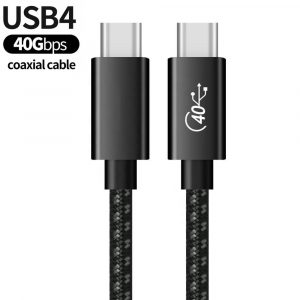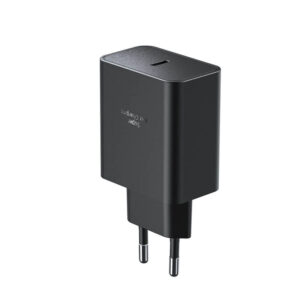In the ever-evolving world of digital connectivity, HDMI (High-Definition Multimedia Interface) has long been the standard for transmitting high-quality audio and video between devices. With the release of HDMI 2.1, there are significant upgrades over the previous version, HDMI 2.0. But with advancements like HDMI 2.1, confusion arises – what are the key differences between HDMI 2.0 and 2.1, and does it truly matter? we’ll delve into the key differences between HDMI 2.0 and HDMI 2.1, helping you make an informed decision for your home entertainment setup.
1. Introduction to HDMI
HDMI is a proprietary audio/video interface that allows the transmission of uncompressed video data and compressed or uncompressed digital audio data from an HDMI-compliant source device, such as a display controller, to a compatible computer monitor, video projector, digital television, or digital audio device. Since its introduction in 2002, HDMI has undergone several revisions, each bringing improvements and new features.

2. Overview of HDMI 2.0
Key Features of HDMI 2.0
Released in September 2013, HDMI 2.0 significantly improved upon its predecessor, HDMI 1.4. Some of the key features include:
- Increased Bandwidth: HDMI 2.0 increased the maximum bandwidth to 18 Gbps, allowing for higher resolution and faster refresh rates.
- 4K Resolution at 60 Hz: HDMI 2.0 supports 4K UHD (3840 x 2160 pixels) resolution at 60 frames per second (fps), which was a significant upgrade from HDMI 1.4’s 4K at 30 fps.
- Dual Video Streams: HDMI 2.0 introduced the ability to transmit two simultaneous video streams to multiple users on the same screen.
- Up to 32 Audio Channels: This version supports up to 32 audio channels, providing a more immersive audio experience.
- Dynamic Auto Lip-Sync: HDMI 2.0 ensures that audio and video stay perfectly in sync, enhancing the viewing experience.
- Support for Rec. 2020 Color Space: It supports the Rec. 2020 color space, enabling richer and more vibrant colors.
Limitations of HDMI 2.0
Despite its advancements, HDMI 2.0 has limitations:
- Bandwidth Constraints: While 18 Gbps was a significant improvement, it still imposed limits on the highest resolutions and refresh rates with full color depth and chroma subsampling.
- Lack of Advanced Gaming Features: HDMI 2.0 lacks several features that cater specifically to the gaming community, such as Variable Refresh Rate (VRR).

3. Overview of HDMI 2.1
Key Features of HDMI 2.1
Introduced in November 2017, HDMI 2.1 brought substantial enhancements, making it a crucial upgrade for future-proofing audio-visual setups. Here are some of its standout features:
- Increased Bandwidth: HDMI 2.1 supports a maximum bandwidth of 48 Gbps, tripling the capacity of HDMI 2.0.
- Higher Resolutions and Refresh Rates: It supports 4K at 120 Hz, 8K at 60 Hz, and even 10K resolution, providing much smoother visuals and future-proofing for upcoming display technologies.
- Dynamic HDR: HDMI 2.1 enables Dynamic HDR, ensuring that every moment of a video is displayed at its ideal values for depth, detail, brightness, contrast, and wider color gamuts.
- Enhanced Audio Return Channel (eARC): This feature supports the most advanced audio formats such as object-based audio, allowing for a more immersive sound experience.
- Gaming Features: HDMI 2.1 includes Variable Refresh Rate (VRR), Auto Low Latency Mode (ALLM), and Quick Frame Transport (QFT), which reduce lag and enhance the gaming experience.
- Quick Media Switching (QMS): QMS eliminates the delay that can result in a blank screen before content is displayed.
Benefits of HDMI 2.1
HDMI 2.1 provides numerous benefits, including:
- Future-Proofing: Its high bandwidth and advanced features ensure compatibility with future technologies.
- Enhanced Visuals: Higher resolutions and refresh rates offer stunning visual quality.
- Immersive Audio: eARC supports high-bitrate audio formats, providing cinema-like sound quality.
- Better Gaming Experience: Features like VRR and ALLM make HDMI 2.1 ideal for gamers, offering smoother and more responsive gameplay

4. Comparing HDMI 2.0 and HDMI 2.1
Bandwidth and Data Transfer Rates
One of the most significant differences between HDMI 2.0 and HDMI 2.1 is the bandwidth:
- HDMI 2.0: Offers up to 18 Gbps.
- HDMI 2.1: Offers up to 48 Gbps.
This increased bandwidth allows HDMI 2.1 to support higher resolutions and refresh rates, enabling a superior viewing experience.
Resolution and Refresh Rates

Resolution and refresh rates determine the clarity and smoothness of the displayed image:
- HDMI 2.0: Supports 4K resolution at 60 Hz, which is adequate for most current content.
- HDMI 2.1: Supports up to 10K resolution,8K at 60Hz and 4K at 120 Hz, making it ideal for high-end displays and future content. The higher refresh rates are particularly beneficial for gaming and fast-paced action scenes.

Dynamic HDR
HDR (High Dynamic Range) enhances the contrast and color range of images:
- HDMI 2.0: Supports static HDR, which uses a fixed HDR metadata.
- HDMI 2.1: Introduces Dynamic HDR, adjusting the HDR metadata frame-by-frame or scene-by-scene, providing a more detailed and accurate picture.

Audio Enhancements
Audio quality is just as important as video quality for a fully immersive experience:
- HDMI 2.0: Supports up to 32 audio channels but lacks advanced audio features.
- HDMI 2.1: Includes eARC, which supports the latest high-bitrate audio formats and object-based audio like Dolby Atmos and DTS, offering superior sound quality.

Gaming Features
Gaming demands features that ensure smooth and responsive gameplay:
- HDMI 2.0: Lacks specific gaming enhancements.
- HDMI 2.1: Includes VRR, ALLM, and QFT, which reduce lag, prevent screen tearing, and ensure a seamless gaming experience.
5. Practical Implications
Home Entertainment
For home entertainment systems, HDMI 2.1 provides a significant upgrade. The ability to support higher resolutions and refresh rates ensures compatibility with the latest 4K and 8K TVs. Dynamic HDR and eARC enhance both visual and audio quality, providing a cinematic experience at home.
Gaming
Gamers will particularly benefit from HDMI 2.1. Features like VRR and ALLM ensure smoother gameplay with reduced latency. The higher refresh rates supported by HDMI 2.1 are perfect for competitive gaming, where every millisecond counts.
Professional Use
In professional settings, such as video production and broadcasting, the higher bandwidth and advanced features of HDMI 2.1 allow for better quality content creation and delivery. The ability to handle higher resolutions and frame rates is crucial for detailed and fast-paced visual content.

6. Future-Proofing with HDMI 2.1
Investing in HDMI 2.1 is a step towards future-proofing your audio-visual setup. As content continues to evolve, requiring higher resolutions and more detailed audio, HDMI 2.1 ensures compatibility with the latest and upcoming technologies. Whether you’re setting up a home theater, a gaming rig, or a professional studio, HDMI 2.1 provides the necessary features to stay ahead of the curve.
7. Conclusion
HDMI 2.1 is a significant leap forward from HDMI 2.0, offering higher bandwidth, better resolution and refresh rates, dynamic HDR, enhanced audio features, and specialized gaming enhancements. These improvements make it the ideal choice for anyone looking to future-proof their audio-visual setup and enjoy the latest in entertainment technology.
Understanding the differences between HDMI 2.0 and HDMI 2.1 helps you make informed decisions about your technology purchases, ensuring that you get the best possible performance and longevity from your devices. Whether you’re a casual viewer, an avid gamer, or a professional content creator, HDMI 2.1 is set to enhance your experience significantly.
Related Products
Wandkey Electronic Co.,Ltd is a specialized manufacturer of phone accessories, including MFI Certified iPhone Lightning Cables, USB Type-C Cables (2.0/3.0/3.1/3.2 Gen 2/USB4), Micro USB Cables, PD Fast Charging Gan Wall Chargers, Car Chargers, and more. Our products are UL/CE/RoHS/FCC/UKCA certified, ensuring the highest level of quality and safety. supports OEM/ODM service, printing logo, customized packaging, color, length, mould etc. Welcome to contact us get the quotation and samples for the test.
Any questions feel free to contact us, we would be happy to solve your issues
Top Topics
2024 Latest MFi Authorized Manufacturers list
Differences of Lightning Connector
How to check MFI Certification
How to get MFI Certification for Your Brand?
Why does the MFI Certified Lightning Cable so expensive?
MFI Product Packaging Requirement?
Disassemble MFI Lightning Cable
How do we guarantee the quality?
How to identify counterfeit or uncertified Lightning connector accessories
How to Choose Fast Charging Cable for Your Phone
How do I choose a USB-C cable?
Differences between USB 3.0 3.1 and 3.2
Test on USB C to USB C 3.1 Cable










